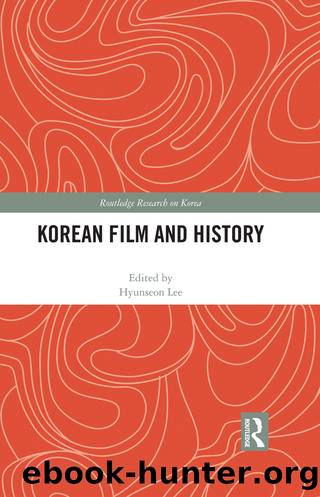Korean Film and History by Hyunseon Lee;

Author:Hyunseon Lee;
Language: eng
Format: epub
Publisher: Taylor & Francis (Unlimited)
Published: 2024-04-15T00:00:00+00:00
Film and History
The multi-dimensional capacity of digital culture, which includes film, affords this medium access to techniques unavailable to print culture. Korean cinemaâs attempts to address colonial-era collaboration have utilised these techniques to offer narratives that expand on those considered above. While avoiding conclusive guilty or innocent verdicts, the films 2009 Lost Memories and Modern Boy deliver a more nuanced discussion that condemns acts of collaboration but also consider the reasoning behind the individualâs decision to do so, manipulating temporal and spatial elements such that historical events in a contemporary dimension flashback to a past and zoom forward to a present, in one case fictional, to present a complexity that written, academic history tends to avoid.15 The visual element engages the audience more closely with the event than does a text-driven presentation. Film historian Robert A. Rosenstone writes:
Portraying the world in the present tense, the dramatic feature [of the history film] plunges you into the midst of history, attempting to destroy the distance between you and the past and to obliterateâat least while you are watchingâyour ability to think about what you are seeing. Film does more than want to teach the lesson that history hurts; it wants you, the viewer, to experience the hurt (and pleasures) of the past.16
Rosenstone advises critics of history-based film who focus on the detours that this medium takes in their narration to focus on the âoverall sense of the past that [films] conveyâ rather than the âspecific detailsâ. Film delivers
rich images and visual metaphors . .. for thinking historically. You may also see the history film as part of a separate realm of representation and discourse, one not meant to provide literal truths about the past (as if our written history can provide literal truths) but metaphoric truths which work, to a large degree, as a kind of commentary on, and challenge to, traditional historical discourse.17
History-based films thus float in a grey area trapped between entertainment and documentary, fiction and âtruthâ, that enables viewers to imagine a story line but still encourages them to reflect on an issue or event as if it were reality regardless of whether the scenes can be verified by documented truth. In the words of historian and literary critic Tzvetan Todorov, through history the reader (and here viewer) âconstructs the imaginary universe on the basis of his [or her] own information (the text, the plausible)â.18
This is evident in the two films considered here, where pro-Japanese Korean collaborators are granted a more subjective understanding that incorporates the complexities (and thus human-ness) behind their decisions, a practice supported by such contemporary research on collaboration as that of Yumi Moon in her work on the Ilchinhoe [Advance in Unity Society], a Korean populist group that encouraged Japanâs 1910 annexation of the Korean peninsula. In her survey of collaboration research, Moon adds that collaborators made âtheir choices with diverse and in some cases even âethicalâ motives, but they faced a political and moral crisis if they failed to justify the validity of their choices more broadly among the occupiedâ.
Download
This site does not store any files on its server. We only index and link to content provided by other sites. Please contact the content providers to delete copyright contents if any and email us, we'll remove relevant links or contents immediately.
The Rape of Nanking by Iris Chang(3522)
The Sympathizer by Viet Thanh Nguyen(3501)
World without end by Ken Follett(3010)
Ants Among Elephants by Sujatha Gidla(2927)
Blood and Sand by Alex Von Tunzelmann(2611)
Japanese Design by Patricia J. Graham(2560)
City of Djinns: a year in Delhi by William Dalrymple(2138)
Inglorious Empire by Shashi Tharoor(2103)
In Order to Live: A North Korean Girl's Journey to Freedom by Yeonmi Park(2060)
Foreign Devils on the Silk Road: The Search for the Lost Treasures of Central Asia by Peter Hopkirk(2058)
Tokyo by Rob Goss(2021)
India's biggest cover-up by Dhar Anuj(1988)
India's Ancient Past by R.S. Sharma(1988)
The Great Game: On Secret Service in High Asia by Peter Hopkirk(1962)
Tokyo Geek's Guide: Manga, Anime, Gaming, Cosplay, Toys, Idols & More - The Ultimate Guide to Japan's Otaku Culture by Simone Gianni(1949)
Goodbye Madame Butterfly(1938)
The Queen of Nothing by Holly Black(1758)
Living Silence in Burma by Christina Fink(1732)
Batik by Rudolf Smend(1723)
